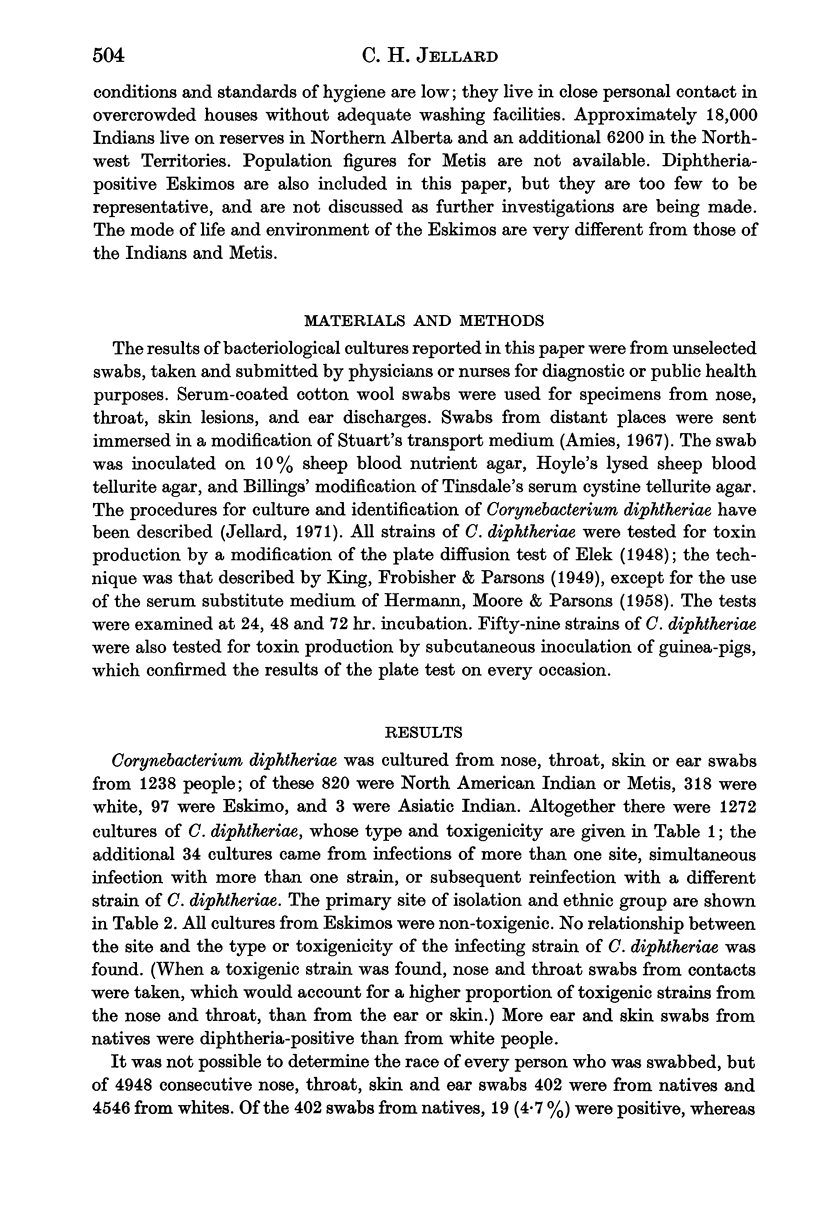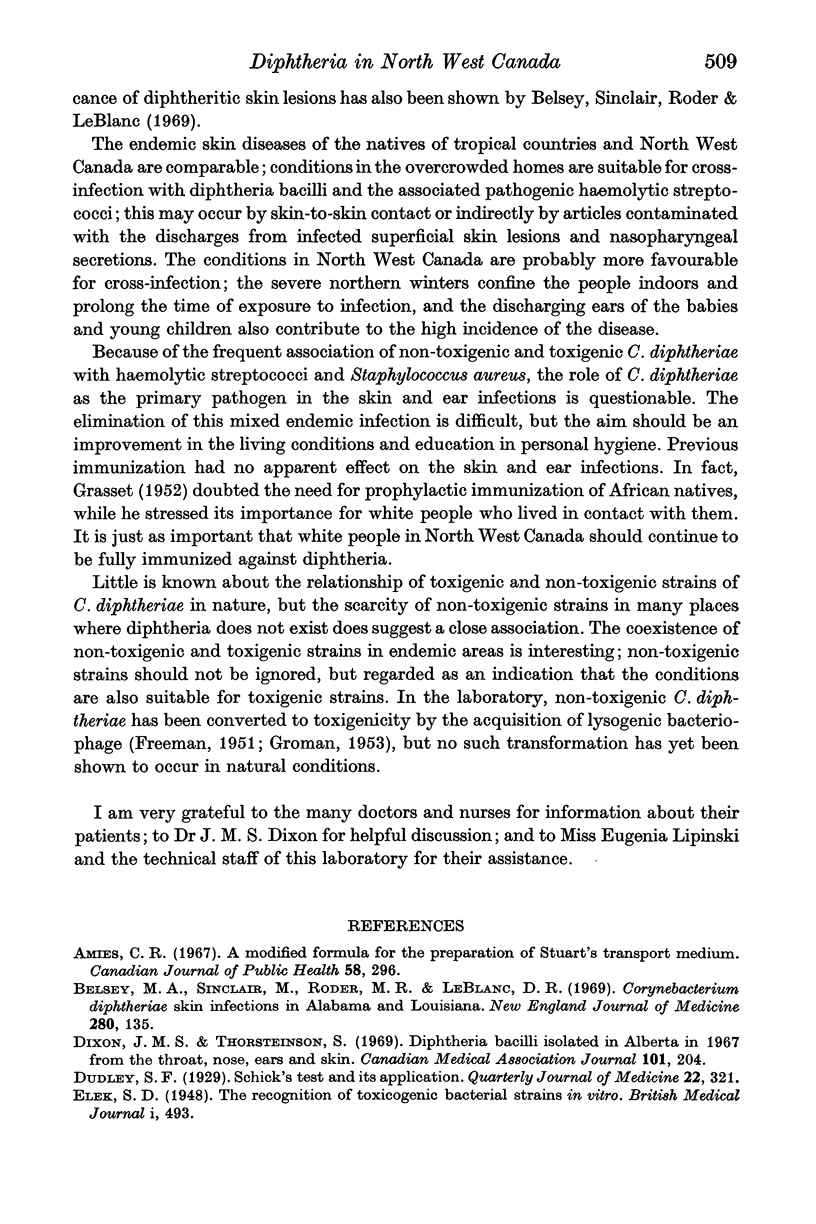Abstract
In three years, Corynebacterium diphtheriae was isolated from 1238 people, consisting of 820 North American Indians or Metis, 318 people of Caucasian origin, 97 Eskimos and 3 Asiatic Indians. Diphtheria infection of the throat, nose, ears and skin was common in the North American Indian and Metis people, but rarely caused severe symptoms. The infection occurred less often in white people but was more serious; of 27 cases of toxic respiratory diphtheria, 25 were white people. The public health significance of the endemic infection of the North American Indian and Metis people is discussed.
Full text
PDF







Selected References
These references are in PubMed. This may not be the complete list of references from this article.
- Amies C. R. A modified formula for the preparation of Stuart's Transport Medium. Can J Public Health. 1967 Jul;58(7):296–300. [PubMed] [Google Scholar]
- Belsey M. A., Sinclair M., Roder M. R., LeBlanc D. R. Corynebacterium diphtheriae skin infections in Alabama and Louisiana. A factor in the epidemiology of diphtheria. N Engl J Med. 1969 Jan 16;280(3):135–141. doi: 10.1056/NEJM196901162800304. [DOI] [PubMed] [Google Scholar]
- Dixon J. M., Thorsteinson S. Diphtheria bacilli isolated in Alberta in 1967 from the throat, nose, ears and skin. Can Med Assoc J. 1969 Aug 23;101(4):204–207. [PMC free article] [PubMed] [Google Scholar]
- FREEMAN V. J. Studies on the virulence of bacteriophage-infected strains of Corynebacterium diphtheriae. J Bacteriol. 1951 Jun;61(6):675–688. doi: 10.1128/jb.61.6.675-688.1951. [DOI] [PMC free article] [PubMed] [Google Scholar]
- GRASSET E. La diphtérie en milieu tropical; etude de l'épidémiologie, de l'immunologie et de la prophylaxie. Bull World Health Organ. 1952;5(3):321–332. [PMC free article] [PubMed] [Google Scholar]
- GROMAN N. B. Evidence for the induced nature of the change from nontoxigenicity to toxigenicity in Corynebacterium diphtheriae as a result of exposure to specific bacteriophage. J Bacteriol. 1953 Aug;66(2):184–191. doi: 10.1128/jb.66.2.184-191.1953. [DOI] [PMC free article] [PubMed] [Google Scholar]
- Gunatillake P. D., Taylor G. The role of cutaneous diphtheria in the acquisition of immunity. J Hyg (Lond) 1968 Mar;66(1):83–88. doi: 10.1017/s0022172400040961. [DOI] [PMC free article] [PubMed] [Google Scholar]
- HERMANN G. J., MOORE M. S., PARSONS E. I. A substitute for serum in the diphtheria in vitro toxigenicity test. Am J Clin Pathol. 1958 Feb;29(2):181–183. doi: 10.1093/ajcp/29.2_ts.181. [DOI] [PubMed] [Google Scholar]
- Jellard C. H. Comparison of Hoyle's medium and Billings' modification of tinsdale's medium for the bacteriological diagnosis of diphtheria. J Med Microbiol. 1971 Aug;4(3):366–369. doi: 10.1099/00222615-4-3-366. [DOI] [PubMed] [Google Scholar]
- KING E. O., FROBISHER M., Jr, PARSONS E. I. The in vitro test for virulence of Corynebacterium diphtheriae. Am J Public Health Nations Health. 1949 Oct;39(10):1314–1320. doi: 10.2105/ajph.39.10.1314. [DOI] [PMC free article] [PubMed] [Google Scholar]


